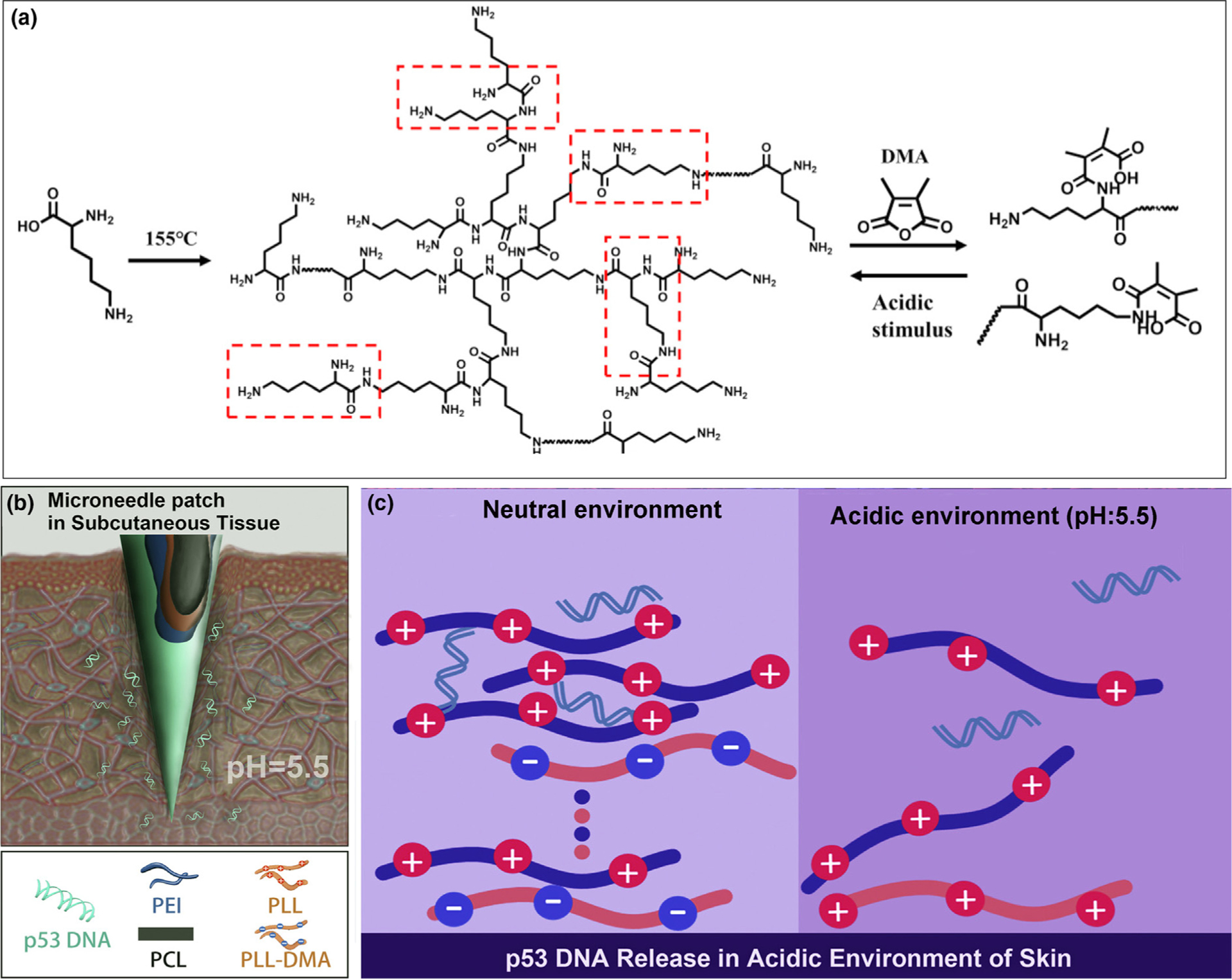FIGURE 3.

pH-responsive multilayer gene delivery microneedle. (a) Polylysine (PLL) and dimethylmaleic anhydride-modified polylysine (PLL-DMA) synthesis. Hyperbranched PLL, a positively-charged amino-rich polymer, is synthesized from lysin under high temperature. When exposed to DMA, the majority of amino groups form bonds with DMAt, producing PLL-DMA that is rich in –COOH functional groups. In acidic conditions, the amide groups are unstable, and PLL-DMA returns to hyperbranched PLL. Charge alteration here is responsible for pH sensitivity of this system. (b) The polyelectrolyte multilayer coating on the surface of microneedles consists of two parts; a pH-sensitive part composed of PLL-DMA/polyethylenimine (PEI) and a therapeutic agent part consisting of p53DNA/PEI. (c) Close-up of the transition polymer layers on the microneedle surface with gene-containing chains on top. Chemistry of the phase transition process is illustrated in detail. At neutral pH, PLL-DMA expresses a negative charge because of its –COOH groups. At low pH, the polymer transforms into positive-charge hyperbranched PLL. The PLL chain shares the same charge as PEI, which causes collapse of the microneedle and release of the therapeutic cargo within the acidic environment of a tumor. Reprinted with permission from [50].
